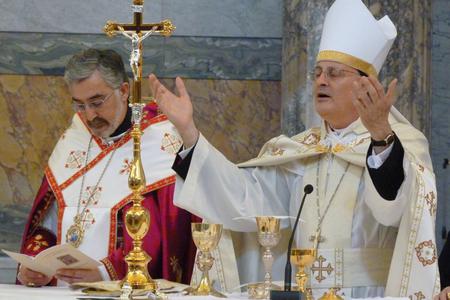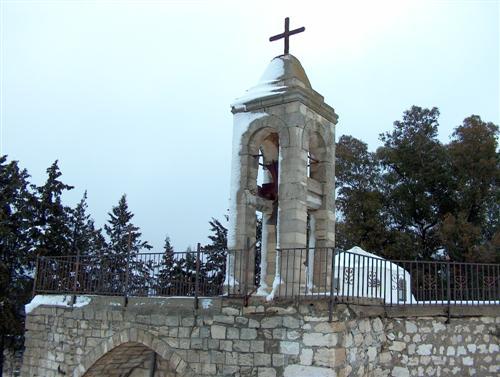
By Joe Bukuras --- catholicnewsagency.com -- What can the Maronite Catholic Church offer to aid the U.S. bishops’ Eucharistic Revival that is currently underway in the United States? The two Maronite bishops in the United States say the answer is the Maronite liturgy, with its deep reverence and focus on Jesus Christ, truly present in the Eucharist. The U.S. bishops’ National Eucharistic Revival, a three-year initiative by the U.S. bishops to inspire Eucharist belief, follows a 2019 Pew Research study that suggested that only about one-third of U.S. Catholics believe the Church’s teaching that the Eucharist is truly the body and blood of Christ. "I think what we have to offer, of course, is the liturgy, which is the focus of our eucharistic reverence and amazement,” Bishop Gregory Mansour of the Maronite Eparchy of St. Maron of Brooklyn told CNA at the U.S. bishops’ conference in Baltimore Nov. 16.
Mansour said that his parishes offer eucharistic adoration and added that when on retreats the priests will adore the Blessed Sacrament for one hour each night. He added that he thinks the Maronite way of receiving Communion by intinction — when the priest dips the Lord's body into his precious blood and places it on the communicant’s tongue — is a “very healthy way” to receive. “It's almost a way of receiving Communion that you have the best of all the worlds. You have it receiving on the tongue; you have it receiving the body and blood; and you have it where you have a moment just to receive Our Lord and reflect on him,” he said. “So I like that practice, and I notice some in the Latin Church have copied it, although I don’t think it’s the norm,” he said.
Zaidan, who was also at the bishops’ conference, said that the suffering, the needy, the brilliant, and the intelligent are all part of the body of Christ and “we have to share and put everything in common to help others.” “From that point,” he said, “in our Maronite liturgy, we have that beautiful reverence to the Eucharist. In everything we do, we go back to the source and summit of our faith as well. Christ’s presence, forever present.”Mansour said that to aid Catholics in their faith in the Real Presence, “I feel strongly it’s good for us to see what we can do to bring people back to church.” “So we have to have beautiful liturgy, good choir, good preaching, welcoming, youth programs, young adult programs, organization, and we can’t just assume that because the church doors are open, people are going to want to come,” he said.
Mansour said that he thinks the Maronite Church had success during the COVID-19 pandemic restrictions because his parish doors were left open while abiding by state and local ordinances. “And I think because we did that, people came from outside and even our own people as well as non-Maronites came in and found a wonderful treasure. The Maronite Church is a treasure and they made their home there,” he said. “So I think the Maronite Church has to just keep doing what she’s always done over the ages. That is just to be a church, be an aesthetical, monastic, prayerful, strong witness to Christ, to the world,” he said.
.jpg)




